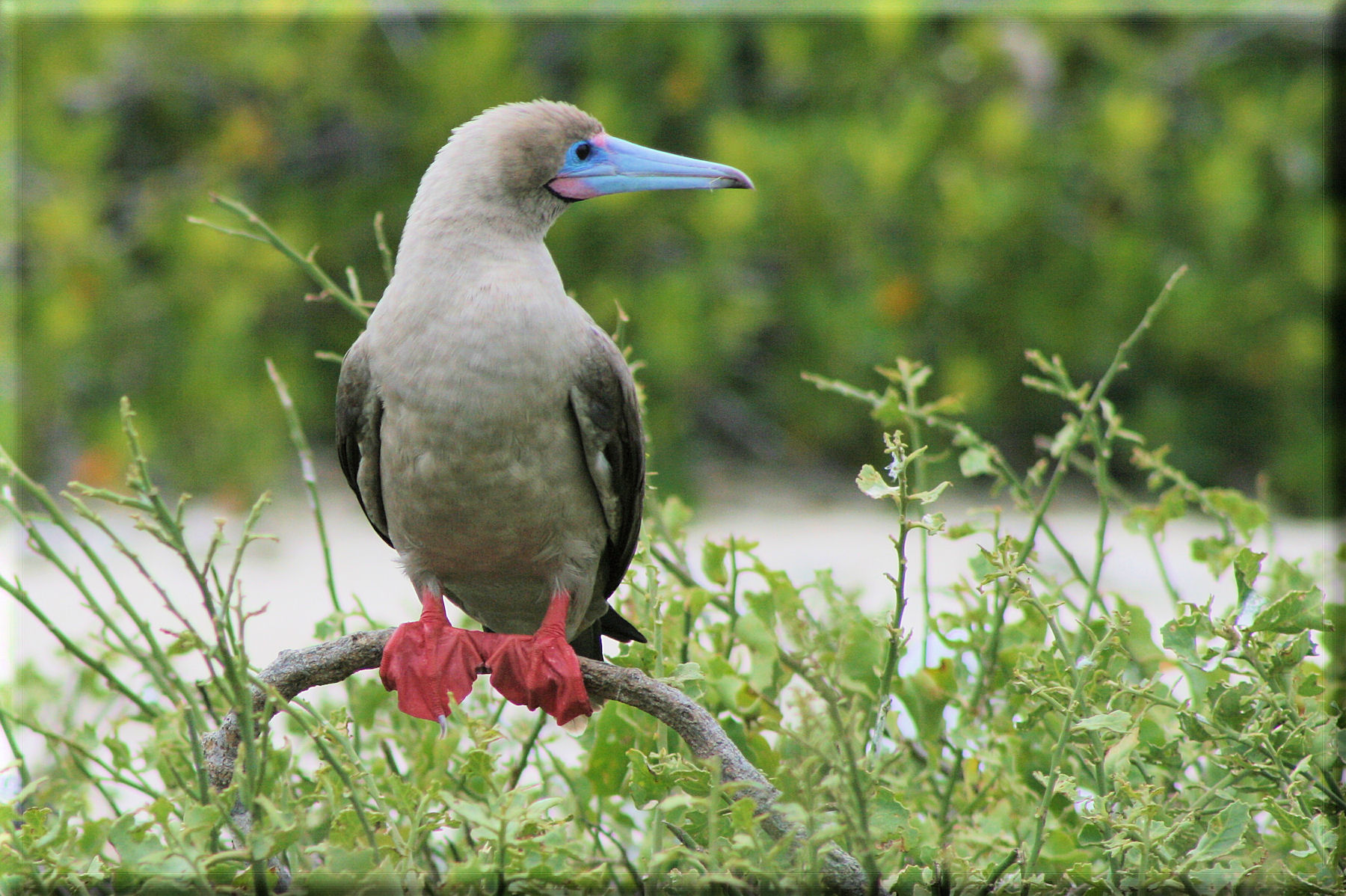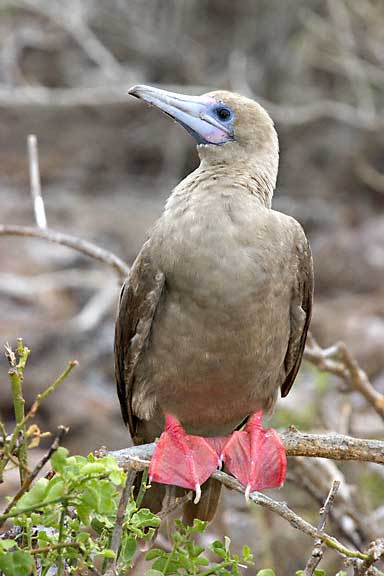
Sula sula
TAXONOMY
Pelecanus Sula, Linnaeus, 1766, Barbados, West Indies. Three
subspecies generally recognized: S. s. sula, Linnaeus, 1766; S. s.
rubripes, Gould, 1838; S. s. websteri, Rotschild, 1898.
OTHER COMMON NAMES
French: Fou а pieds rouges; German: Rotfusstцlpel; Spanish:
Piquero Patirrojo.
PHYSICAL CHARACTERISTICS
26–30.3 in (66–77 cm); 1.9–2.2 lb (0.9–1.0 kg); wingspan
35.8–39.8 in (91–101 cm). Smallish, polymorphic sulid. Some
individuals mostly white, with only flight feathers black (tail remains
white in most plumages); others are wholly brown, with
flight feathers always looking darker. Feet and cere around bill
reddish in most plumages. Females average slightly larger.
DISTRIBUTION
Pantropical, race sula occurs in Caribbean and southwest Atlantic
Ocean, rubripes in tropical west and central Pacific and
also Indian Ocean, websteri in east Pacific.
HABITAT
Strictly marine and largely pelagic, feeding largely offshore.
Nests on offshore islands with abundant vegetation.
BEHAVIOR
Repertoire of ritualized displays more moderate than in other
species, adapted to breeding habitat on trees. Role of brightred
feet largely unknown.
FEEDING ECOLOGY AND DIET
Feeds mostly offshore, preying on flying-fish and squid.
Catches prey by plunge-diving from considerable height, but
also takes flying-fish in flight. Partially nocturnal habits.
REPRODUCTIVE BIOLOGY
Not seasonal, may start breeding in any month. Highly colonial,
builds nest of sticks on top of tree or bush. Lays one egg,
incubated for 45 days. Chick fledges at 100–139 days, later
cared for 190 days. First breeds at two to three years old.
CONSERVATION STATUS
Not threatened. Widely scattered, reasonably large population.
Subject to direct exploitation and disturbance, most important
threat comes from destruction of nesting habitat.
SIGNIFICANCE TO HUMANS
Traditionally exploited for food over much of its range.
Other popular Animals
Photo Gallery of - Red-footed booby




 Animalia Life
Animalia Life